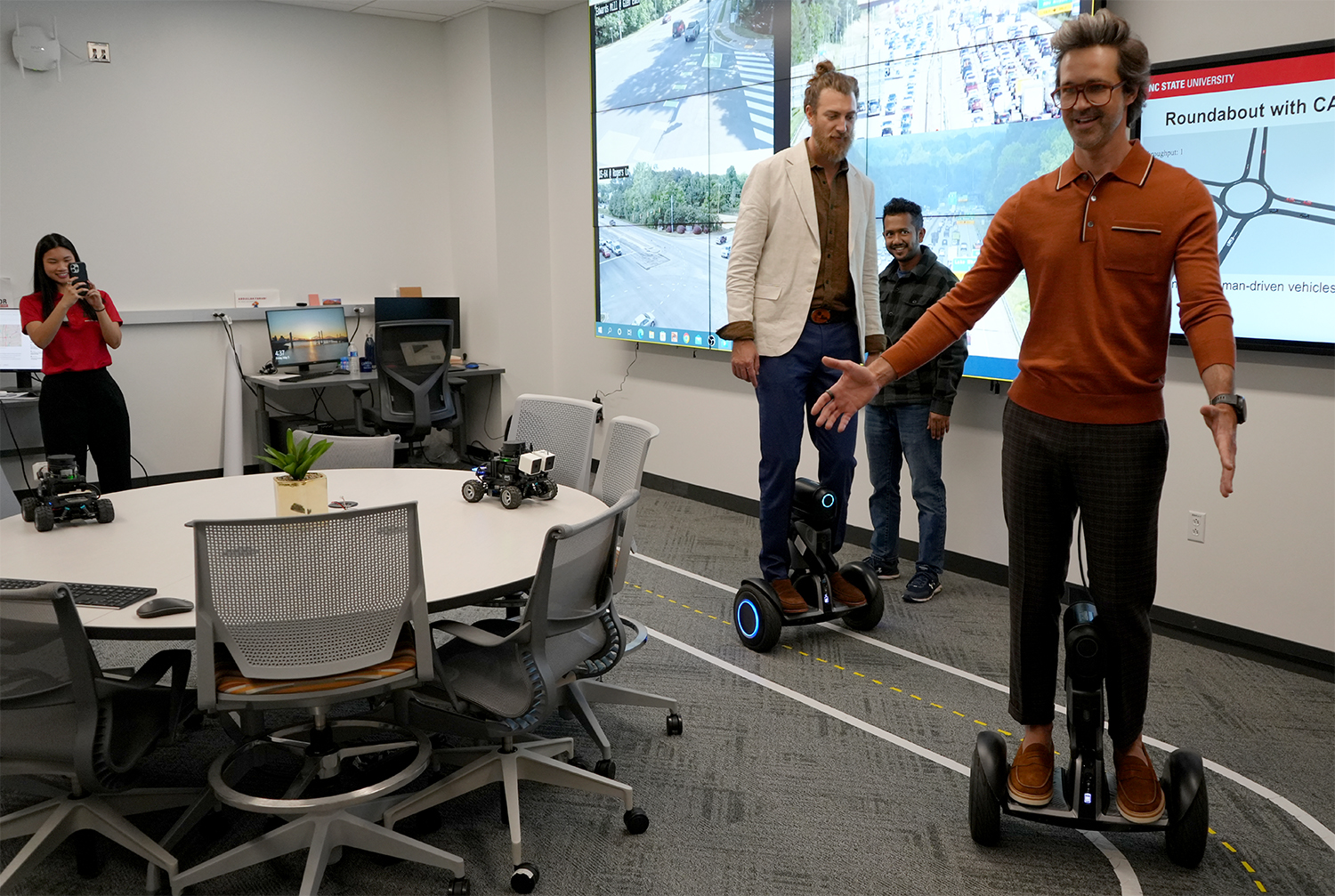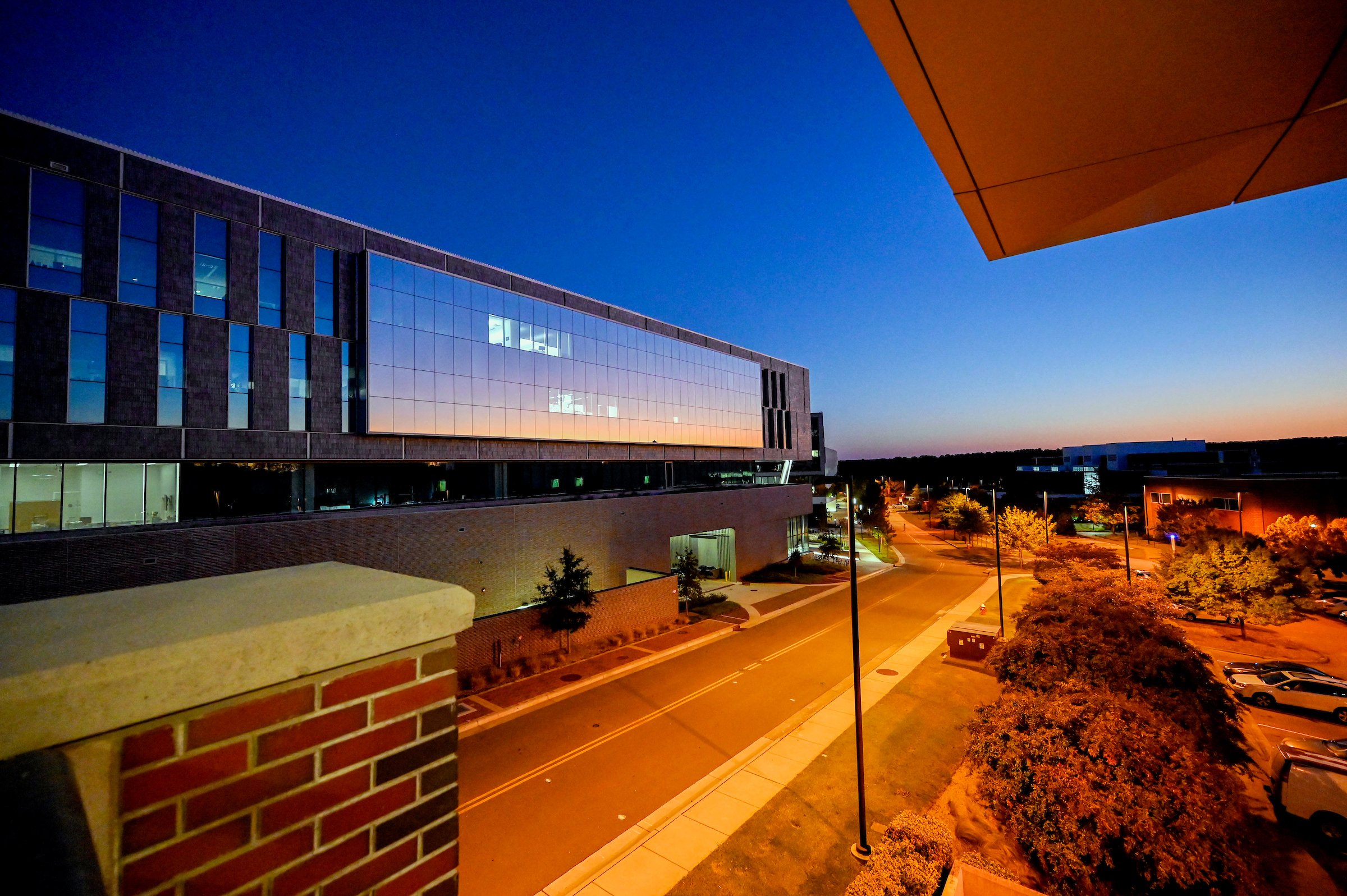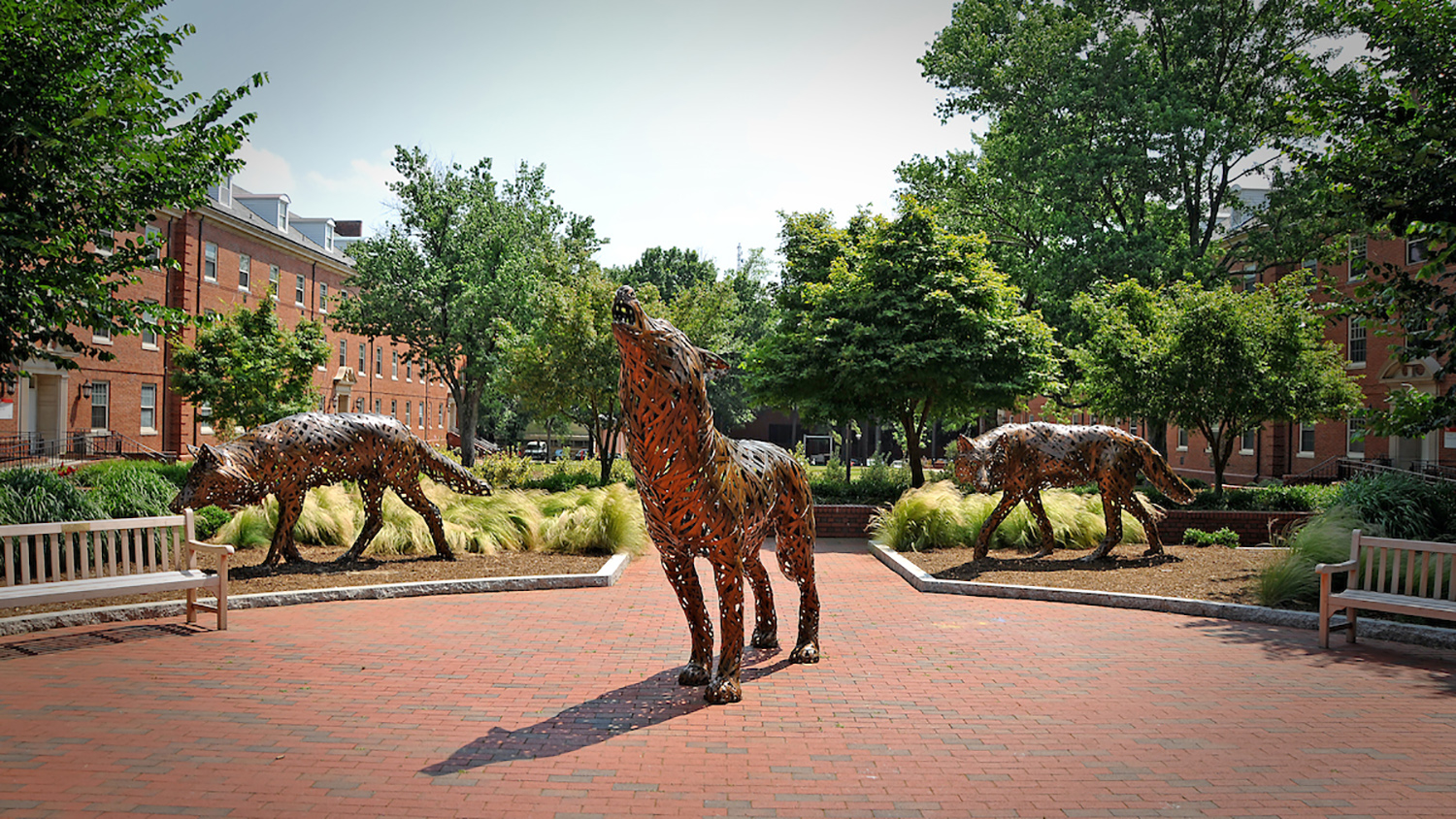Havelock-based program fosters local engineering talent in eastern NC
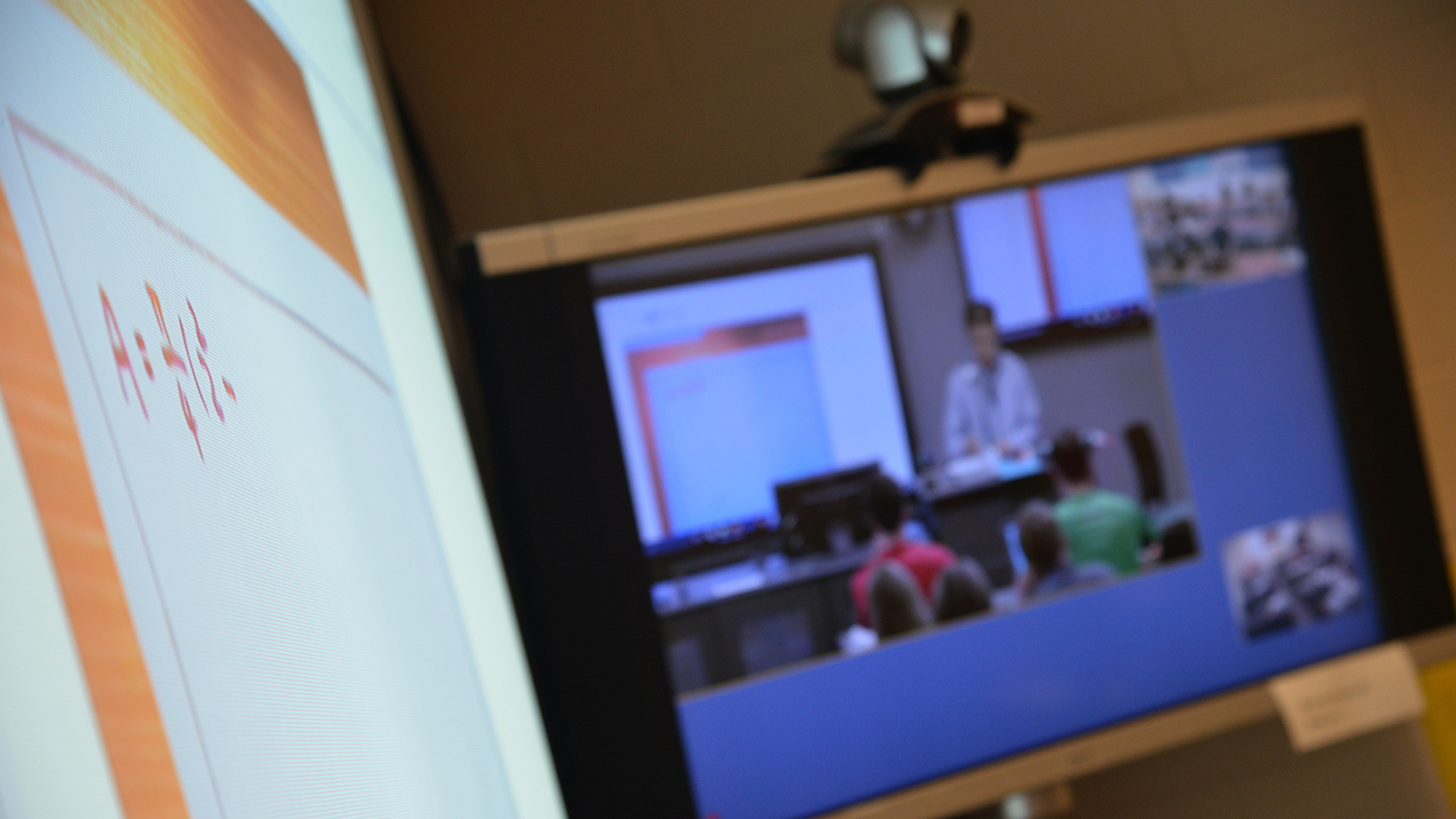
In the early 2000s, two NC State alumni had the vision of growing their own engineers to ensure they had enough talent to supply the needs of NAVAIR’s Fleet Readiness Center East (FRC East), a U.S. Navy aviation repair and maintenance facility at Cherry Point in Havelock, North Carolina.
Chris Holder, then head of air vehicle engineering at FRC East, and Dennis West, then head of research and engineering, had both earned degrees from NC State’s Department of Mechanical and Aerospace Engineering. They approached NC State and Craven Community College about developing a site-based Bachelor of Science in Engineering (BSE) program with a concentration in Mechanical Engineering Systems (MES) at Craven’s Havelock campus. While West moved on to another role, Holder, now head of research and engineering, continued to work to get the program off the ground. In 2004, Bill Fortney started as NC State’s Eastern North Carolina regional director of engineering, and by 2012, the first class of four graduates completed their degree.
Ten years since the first graduating class, 75 people will have graduated from the Havelock site, with 91 percent of them staying in eastern North Carolina. The program has strengthened support for the U.S. Marine Corps at FRC East, the only fleet readiness center commanded by Marines, as well as made a significant impact on eastern North Carolina’s economy.
After Ben Tosto reached a ceiling in the construction industry, he started looking for other options. He was 30 years old, had two kids, a wife and a mortgage — relocating was not an option. He learned that he could take night courses in the site-based MES program while still working and without leaving eastern North Carolina. He was sold.
Being able to get the entire four-year degree without leaving Havelock — it was almost a no brainer.
“It was the hardest thing I’ve ever done in my life,” Tosto laughed, recalling his struggles of trying to work full time while studying engineering. “But I wouldn’t be where I am today if it wasn’t for that program.”
Tosto works for NAVAIR as a mechanical engineer. “It’s very rewarding, knowing that you’re making a difference in something so large,” Tosto said. “There’s a sense of pride there. When you see a military craft fly over, you look up and you know that you had a part in that.”
The program’s benefits have also extended beyond FRC East. Twelve percent of its graduates have been employed locally by other companies.
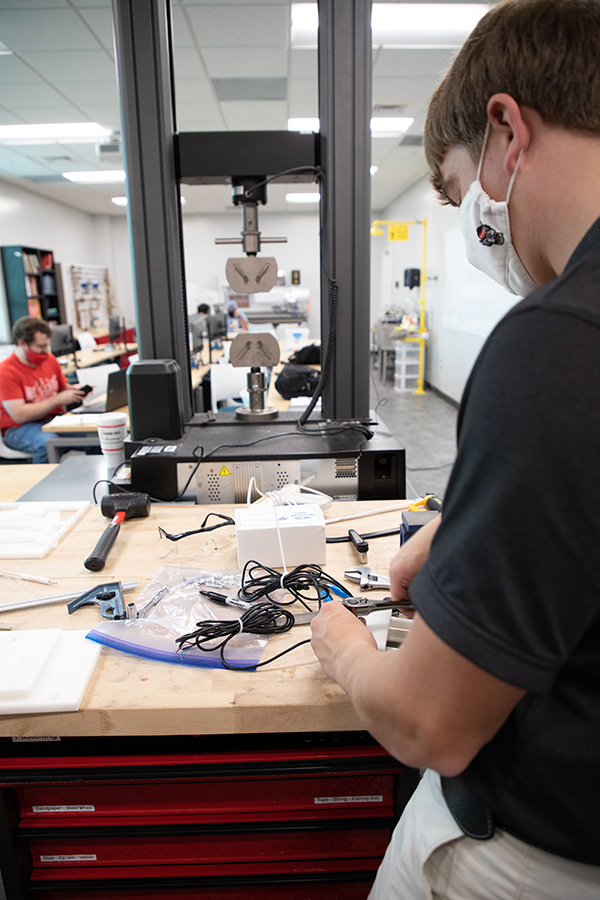
“That’s a really neat phenomenon that’s happening that none of us anticipated,” said Fortney. “The program is helping Cherry Point but it’s also helping other eastern North Carolina companies who need engineering talent.”
Havelock-based Tandemloc, which designs and manufactures cargo handling equipment, has a small group of engineers. Two of those engineers will be retiring soon, and the company needed to find a new head of engineering. Tandemloc’s leadership approached Daniel Colwell, employed in their machine shop at the time, about enrolling in the program. Colwell had a wife, a son and a full-time job and was not able to relocate or commute for school. Now, after receiving his BSE, he is an engineer for the company.
“Being able to get the entire four-year degree without leaving Havelock — it was almost a no brainer,” Colwell said. “It was an opportunity I just couldn’t turn down.”
While the program is appealing to nontraditional students like Tosto and Colwell, NC State and NAVAIR have collaborated on efforts to draw in more traditional students — students coming directly from high school.
“Early on we knew that if the dream of growing their own engineers was going to be realized, we would have to invest in the K-12 pipeline,” Fortney said.
NC State and NAVAIR began visiting classrooms to expose students to engineering activities. Together, they started a middle school engineering camp. Holder and Fortney also created a Science and Engineering Forum for Craven and Carteret counties with the goal of encouraging students to consider pursuing STEM careers.
“All of that work has created an awareness of engineering in eastern North Carolina, so we have seen an increase in our traditional population,” Fortney said of the students in the Havelock MES program. “We love having the mix of traditional and nontraditional students because they help each other. Having a mix makes for a rich learning environment.”
Today, 60 percent of the site-based MES program’s students are traditional, 29 percent are veterans and 11 percent are nontraditional locals.
“We’re excited that the program continues to grow and will soon sustain 20 to 25 graduates every year,” said Ray Staats, president of Craven Community College. The school recently completed construction of a STEM building on the Havelock campus that allows the college to devote significantly more space and resources to the program.
“As we’re at this 10-year point, we look back and we can name students that have come through the program that we know would never have been able to have their engineering degree without this program,” Fortney reflected. “We see the change that it’s made in their life. But we also see the change that they’re having on the men and women that serve us in the military because of the work that they do supporting military aviation. It’s humbling realizing that we’ve been able to play a part in that and the significant impact that this partnership has had and is still having on eastern North Carolina. NC State, NAVAIR and Craven Community College had the foresight to make a long-term investment in eastern North Carolina, and that investment is paying off. It’s a great story.”
- Categories:
